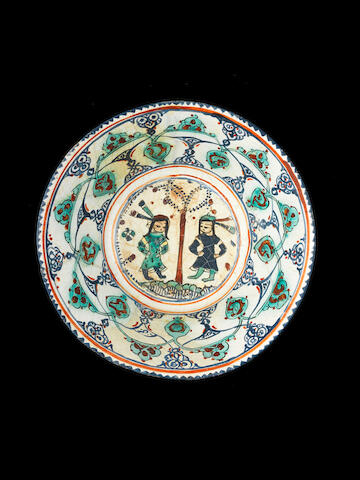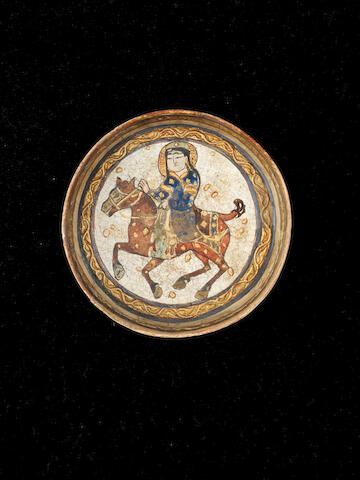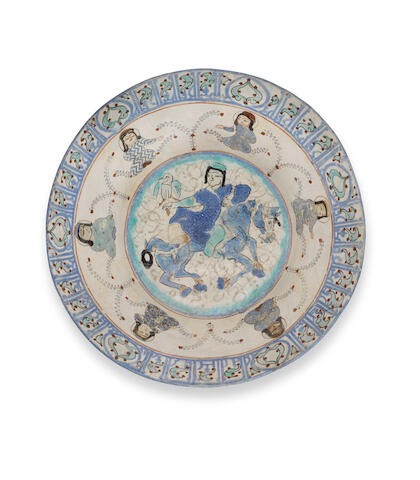Overall, I am happy with the way that my podcast has turned out and immensely enjoyed both the practicalities of making it and the research that came prior to creating the script.
There are, however, details that I feel could have been improved to make the viewing experience more pleasurable. I hoped to capture the bowl in a more interesting manner, however due to the limitations of handling a delicate and highly valuable object as well as the issue of removing any hands from the footage, I had to settle on a simple spinning motion. I felt including my hands in the footage would have taken away from the film, as although I did not have to wear blue gloves, it still did not look as professional or aesthetically pleasing. It was also a shame that I wasn't able to film pieces that were in other galleries such as the Dutch Tiles, however I hope that by including still images of these objects I could show a better visual comparison and help the viewer follow my line of speech better. Another massive shame was that my video was watermarked with the software that I used. Unfortunately I was unable to get around this but it does not make for the most pleasurable viewing experience.
In terms of my research log, I tried to keep the process as organic as possible and write blog posts when and where the information became available to me. Particularly in the instance of the translation issue, where I was awaiting replies/an answer for a long time, this means the blog is not always in the more readable order and often diverts down (unnecessary) tangents. However, I feel I got more out of the project this way as it allowed for a wider breadth of research and the time to personally reflect and think about my object.
After having picked the bowl, I discovered that there was a lack of information about the trail of its path to Durham due to poor records, and with no name of artist available, it became hard to do specific research on the bowl. I therefore leaned a lot more on researching the general history and nature of fritware, and a comparative stance with other bowls in the collection and the archives of the Victoria and Albert and essays from the Metropolitan museum. One silver lining of this lack of information though, was that it did force me to get in touch with several experts, including my translator and the National Arts Fund, which was massively rewarding and made me feel a lot more involved in my research.
There are, however, details that I feel could have been improved to make the viewing experience more pleasurable. I hoped to capture the bowl in a more interesting manner, however due to the limitations of handling a delicate and highly valuable object as well as the issue of removing any hands from the footage, I had to settle on a simple spinning motion. I felt including my hands in the footage would have taken away from the film, as although I did not have to wear blue gloves, it still did not look as professional or aesthetically pleasing. It was also a shame that I wasn't able to film pieces that were in other galleries such as the Dutch Tiles, however I hope that by including still images of these objects I could show a better visual comparison and help the viewer follow my line of speech better. Another massive shame was that my video was watermarked with the software that I used. Unfortunately I was unable to get around this but it does not make for the most pleasurable viewing experience.
In terms of my research log, I tried to keep the process as organic as possible and write blog posts when and where the information became available to me. Particularly in the instance of the translation issue, where I was awaiting replies/an answer for a long time, this means the blog is not always in the more readable order and often diverts down (unnecessary) tangents. However, I feel I got more out of the project this way as it allowed for a wider breadth of research and the time to personally reflect and think about my object.
After having picked the bowl, I discovered that there was a lack of information about the trail of its path to Durham due to poor records, and with no name of artist available, it became hard to do specific research on the bowl. I therefore leaned a lot more on researching the general history and nature of fritware, and a comparative stance with other bowls in the collection and the archives of the Victoria and Albert and essays from the Metropolitan museum. One silver lining of this lack of information though, was that it did force me to get in touch with several experts, including my translator and the National Arts Fund, which was massively rewarding and made me feel a lot more involved in my research.
After I felt I had a good body of knowledge behind me, it was time to create the storyline and script for my podcast. I found this by far the most enjoyable part of the process, as unlike the traditional academic essays I am used to writing, where a strong argument must be followed, this allowed me to delve into the parts I found the most interesting and have more of a flow behind my work.
I cannot express my gratitude enough for the help of the staff at the Oriental Museum who were extremely helpful in providing the documentation that I needed and their patience when I stressed about the origin of the bowl. Thanks also to Anthony Parton for putting together the module and the unique chance for a research project quite unlike any other that is on offer at Durham University.
I cannot express my gratitude enough for the help of the staff at the Oriental Museum who were extremely helpful in providing the documentation that I needed and their patience when I stressed about the origin of the bowl. Thanks also to Anthony Parton for putting together the module and the unique chance for a research project quite unlike any other that is on offer at Durham University.










